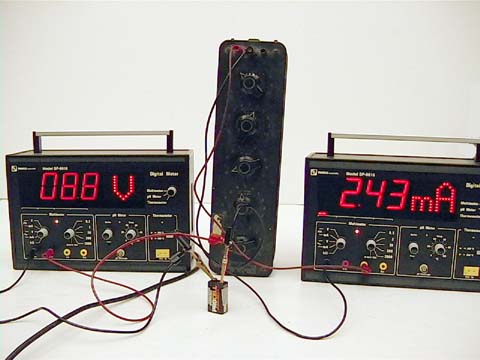TEST KEEP CLOSED
MECHANICS
Mechanics
- The Monkey and The Hunter
- Simultaneously Shoot and Drop Pair of Spheres
- Projectile Launched Vertically from a Moving Cart
Newt's Laws of Motion
- Newton's First Law
- Newton's Second Law
- Newton's Third Law
- Blackboard Mechanics Kit
- Cork Bob Accelerometer
Work and Energy
- Bowling Ball Pendulum
- Blocked Pendulum
- Loop-The-Loop
- Coefficients of Friction
- Friction Cart
- Energy Stored in a Spring
Mechanical Equilibrium
Collisions and Conservation of Momentum
- Explosions
- Totally Inelastic Collisions
- Elastic Collisions
- Newton's Collision Apparatus
- Internal Degrees of Freedom
Circular Motion
- Balls in Rotating Cups
- Loop-the-Loop
- Elastic Collisions
- Swinging Water Bucket Overhead
- Conical Pendulum
Rigid Body Rotations
OSCILLATIONS AND WAVES
Periodic Motion
Driven Oscillations and Resonance Phenomena
- Driven, Damped Harmonic Oscillator
- Resonance with a Speaker and Adjustable Pipe
- Driven Pendulum
- Modes of Vibration
- Compound Pendulum
- Chaotic Oscillations
Propagation of Mechanical Waves
Superposition of Waves
Normal Modes of Vibration
Acoustic Phenomena
OPTICS
Geometrical Optics
- Blackboard Optics Kit
- Dispersion in a Prism
- Total Internal Reflection
- Fiber Optic Cables
- Speed of Light
Interference and Diffraction
- Single Slit
- Double Slit
- Multiple Slits and Gratings
- Thin Film Interference:
- Newton's Rings
- Poisson's Spot
- Michelson Interferometer
Polarization
THERMAL PROPERTIES OF MATTER
Thermal Expansion
Thermal Conductivity
THERMODYNAMICS
Pressure-Volume-Temperature Relationships
- Adiabatic Gas Law
- Pressure Differences
- Model Lung
- Boyle's Law
- V-T Relationship at Constant Pressure
- P-V-T Surface for Water
- Diffusion Through an Aperture
- P-T Relation at Constant Volume
Many Particle Systems
ELECTRICITY & MAGNETISM
Electric Charge and Field
- Positive and Negative Charge by Friction
- Induced Surface Charge on Conductors
- Coulomb's Law
- Distribution of Surface Charge on Conductors
- Capacitors and Energy Storage
- Capacitance vs. Plate Separation
- Van de Graaff
- Jacob's Ladder
- Electric Field Lines
- Force on a Moving Charge in an Electric Field
- Flux Surface and Volume
Current and Resistance
- Resistors in Series and Parallel
- Internal Resistance of a Battery
- Ohmic and Non-Ohmic Devices
- Drift Velocity Demonstrator
- Wire Fryer (DC version)
Magnetic Field and Forces on Currents
- Magnetic Domain Model
- Magnetic Field of Permanent Magnets
- Earth's Magnetic Field: Dip Needle
- Magnetic Field of Currents
- Magnetic Field of a Solenoid
- Magnetic Force on an Electron Beam:
- Magnetic Force on a Current-Carrying Wire
- Magnetic Torque on a Current Loop
- Force Between Current-Carrying Wires
Induced Currents and EMF
- Faraday's Law and Lenz's Law
- Enclosed Fields and Magnetic Induction
- Current Generators
- DC Motors
- Eddy Currents:
- Jumping Rings
- Wire Fryer AC
- Transformers and Flux Linkage
- Self-Inductance and Energy Storage
- Displacement Current
Time Dependent Currents
Superconductivity
Electromagnetic Waves
ATOMIC AND NUCLEAR PROCESSES
Quantum Physics
Nuclear and Particle Physics
VISUAL AIDS
Internal Resistance of a Battery
The internal resistance of a battery is determined by measuring the terminal voltage as a function of load resistance. The terminal voltage drops by a factor of two, compared to the open circuit voltage, when the load resistance equals the internal resistance. A decade resistor box is used as the variable load. Current and voltage are measured on large display LED meters for easy viewing in a classroom.
